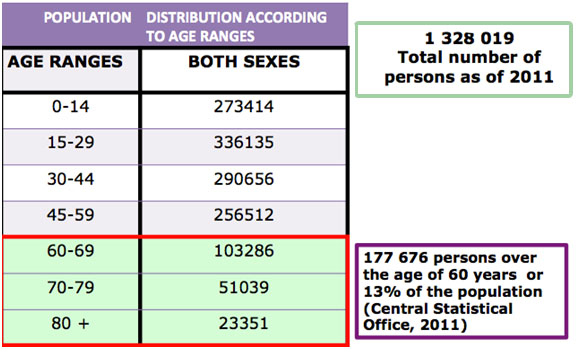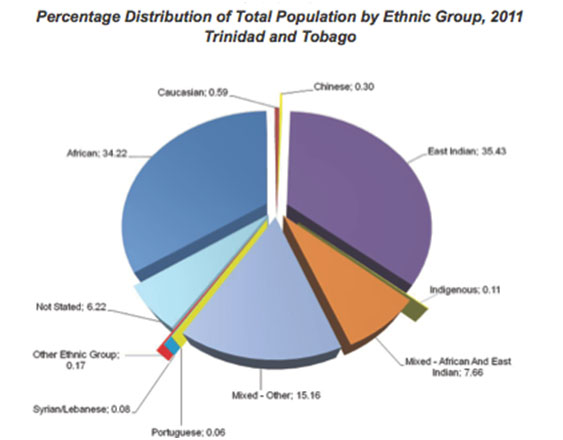THE CARIBBEAN AN AGING REGION
With its ageing population the Caribbean is entering a new phase. Between 1990 and 2010 the number of persons aged 60 and above in the Caribbean region increased from 1.13 million to 1.62 million. It is projected that between 2010 and 2030 the number will increase to 2.76 million. Changing of population structure is on the one hand encouraging as people are living longer and on the other hand it requires implementing structures to accommodate the demands of an ageing population.
The challenges of changing populations and their implications on countries have been addressed two conferences organized by the United Nations one in Vienna 1982) and the other in Madrid (2002). It was at the Madrid conference that governments committed to what is known as the Madrid International Plan of Action on Ageing. By adopting this plan governments agreed to address the implications of changing ageing structures and to meet the needs of the elder in their individual countries.
Subsequently to the Madrid conference three Regional Intergovernmental Conferences on Ageing in Latin America and the Caribbean have been organized
The first was held in Santiago in 2003, to further reinforce the regional commitment to the Madrid plan and focused attention on regional priorities.
A second one met in Brasilia in 2007. In 2007, the countries adopted the Brasilia Declaration, which reaffirms the commitment of member States to “spare no efforts to promote and protect human rights and fundamental freedoms of all older persons, work towards the eradication of all forms of discrimination and violence and creating safety nets for older persons to exercise their rights.”(down load PDF)
A third meeting was then held in San Jose Costa Rico in 2012. The purpose of this meeting was to evaluate the measures that governments had put into place towards their commitment to the Brasilia Declaration and the Madrid plan of action. National progress reports are available online. It is rewarding that all Caribbean governments have implemented actions.
TRINIDAD AND TOBAGO POPULATION DISTRIBUTION ACCORDING TO AGE
According to the 2010 census the population age distribution of Trinidad and Tobago is provided below:

ETHNIC COMPOSITION
East Indians and Africans are the two largest ethnic groups in Trinidad and Tobago. East Indians accounted for 35.4% of the total population while Africans accounted for 34.2%. The next largest group was described as ‘Mixed’ representing 22.8% of the population and disaggregated into the ‘African/East Indian’ 7.7% and ‘Mixed Other’ 15.1%.

Source for both population distribution and ethnicity from TRINIDAD AND TOBAGO 2011 POPULATION AND HOUSING CENSUS DEMOGRAPHIC REPORT Published by the Central Statistical Office of Trinidad and Tobago to access full PDF document click on link CSO PDF
http://www.cso.gov.tt/sites/default/files/content/images/census/TRINIDAD AND TOBAGO 2011 Demographic Report.pdf
TRINIDAD & TOBAGO AN AGING COUNTRY
The United Nations define a country as ‘ageing’ when 10% or more of its population is over the age of 60 years.
In 2002, data from the Central Statistical Office in Trinidad and Tobago revealed that 10% of the population was over the age of 60 years .
At present, the elderly population of Trinidad and Tobago stands at 13 percent or 177 676 persons over the age of 60 years (Central Statistical Office, 2011).
According to the UN World Population Prospects (2008), the percentage of persons in Trinidad and Tobago aged 60 years and over is projected to be 17.7% in 2025 and expected to grow to 30.1% in 2050
